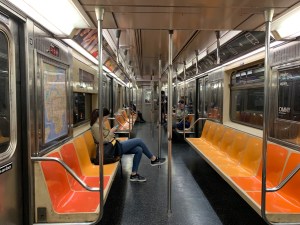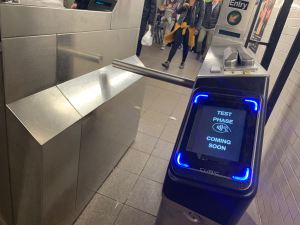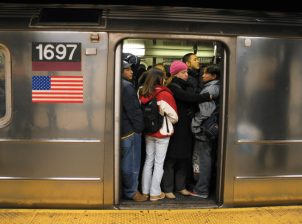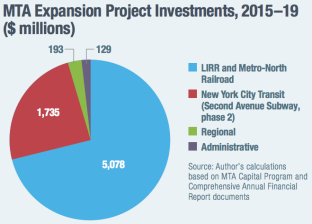Without New Funding, the MTA Faces a Fiscal Cliff After 2023
Ridership figures, battered by pandemic waves and changing work patterns, are tanking the agency's budgeting.
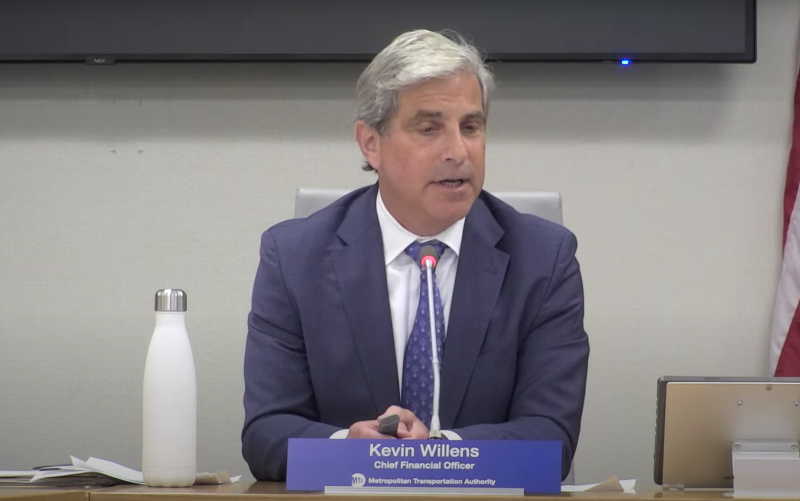
The MTA’s finances going forward are a choice between bleak and bleaker — depending on state action.
The agency’s mid-year finance update on Monday afternoon showed that a combination of work-from-home trends and fewer non-work transit trips are driving pokey ridership. And without the fare-box revenue from those riders, the MTA will eat up the funds it received in 2021 as part of the American Rescue Plan Act a year earlier than it had expected.
In a presentation to the MTA Board, Chief Financial Officer Kevin Willens disclosed that the agency’s projections (it relies on forecasts from McKinsey & Co.) show a “substantially” smaller ridership recovery: Thus, the MTA must base future spending on a scenario in which only 74 percent of pre-pandemic riders return to subways, trains and buses by 2024. The agency had budgeted based on a projection that 86 percent of pre-pandemic riders would return by 2023, which had put it on pace for a (relatively manageable) $500 million deficit in 2025.

Now, however, the agency is projecting that, at its current pace of spending and ridership, it will lose almost $4 billion in expected fare and toll revenue through 2026. That hole means the MTA will exhaust its federal pandemic aid by the end of 2024, and must find a way to fill deficits of more than $2.4 billion each year from 2025 to 2028 — which state law says the agency may do through fare hikes, service cuts or layoffs.
Willens laid out a scenario in which the MTA might avoid such deficit strategies, but it requires state legislators to play along. If the MTA spent less of its federal pandemic aid beginning next year, it could stretch out the rescue money until 2028 and lower the remaining deficits to $1.6 billion a year from 2024 to 2028. Doing so, however, also would require Albany to find a new revenue stream for the agency that could cover a $795 million deficit in 2023 and $1.6 billion deficits for each of the following five years.

Although legislators might balk at providing the MTA with that kind of money, Willens implored the state to act sooner rather than later in order to to keep mass transit alive.
“If we start working together and start solving the deficit by 2023, we can lower the fiscal cliff by a billion dollars a year,” he said. “The current assumption is spend all the federal aid early, delay taking any action, bond out the deficit financing. The result is the fiscal cliff of $2.5 to $2.7 billion per year. This is not the responsible way to go, this is in essence just kicking the can, particularly in light of now we have a new forecast showing how entrenched the assumptions are on our ridership recovery. So what are we waiting for?”
The MTA leadership has been asking Albany for more money for a while. In December, Chairman and CEO Janno Lieber said that mass transit should be funded like the essential service it is and rely less on fares. This year, however, in the teeth of rising fuel costs, Albany funded a gas-tax holiday, saying it would use general fund money for any MTA shortfalls. Advocates had hoped that the state would reallocate gas-tax revenues for mass transit instead of highways.
Now Gov. Hochul and lawmakers will need to step up if they want to avoid a transit apocalypse, advocates said.
“The biggest mistake this year was passing the gas tax holiday, because it was simply bad policy that encouraged state spending on the wrong thing — incentivizing driving — rather than funding mass transit,” said Reinvent Albany Senior Researcher Rachael Fauss. “Any funding from the state to the MTA needs to be recurring, dedicated and lockboxed revenue, not a ‘one-shot’ gap closer. The state owns the MTA and is responsible for making sure it is on strong footing to keep providing reliable service as ridership stagnates, and that means the state needs to create new, reliable revenue streams for the MTA.”
MTA leaders did not say where they thought the state should get the money to plug the deficit. Lieber has said that he is “agnostic” about where such revenue might originate.
Riders Alliance Director of Policy and Communication Danny Pearlstein said that state should invest in more frequent transit service in order to lure back riders. “With fewer people commuting the work, the MTA must be better than before to capture a greater share of non-work trips,” he said.
Monday’s bad news was months in the making. Ridership has plateaued at around 60 percent of pre-pandemic figures, straining the MTA’s operating budget, which before the pandemic typically relied on on revenue from riders to fund about 38 percent of its operating budget. In January, because of the Omicron surge, ridership numbers, which had been teetering between the best-case and worst-case scenarios of McKinsey’s forecasts, fell to under 50 percent of pre-pandemic numbers — below even the worst-case ridership predictions of 2020. As Omicron receded, ridership rose above the worst-case scenario — but it began to stall out and dropped below that again in April, where it has stayed since.

The MTA acknowledged months ago that it would run through the pandemic-related federal aid. Willens said in May that the MTA definitely had enough money to get through 2022 and 2023 but said only “we’ll see” about the 2024 and 2025 operating budgets. Pandemic aid was supposed to have floated the agency through 2025.
State Comptroller Tom DiNapoli warned starkly that the ridership slump was putting the MTA on pace for a $2 billion deficit by 2026 and that, barring an immediate subsidy or rescue package from Albany, the agency would need to examine service changes.
MTA senior officials said, meanwhile, that they do not expect ridership to return to pre-pandemic levels before 2035, at best. That forecast mirrors one that the Regional Plan Association recently stated in a report on the future of cross-Hudson train trips. The RPA predicted that, depending on whether there’s strong population and job growth in the New York City region or an economic downturn and slower population growth in the region, office attendance and cross-river trips would surpass their pre-pandemic numbers sometime between 2030 and 2050.
The new ridership projections are a blow to the city and region’s expected mass-transit recovery, which was predicated on the coronavirus pandemic ending in a manner that didn’t involve the world grinding through variants. In the new best-case scenario, ridership would hit 88 percent by 2026, as opposed to the earlier best-case expectation that 86 percent of riders would have returned by 2023.
